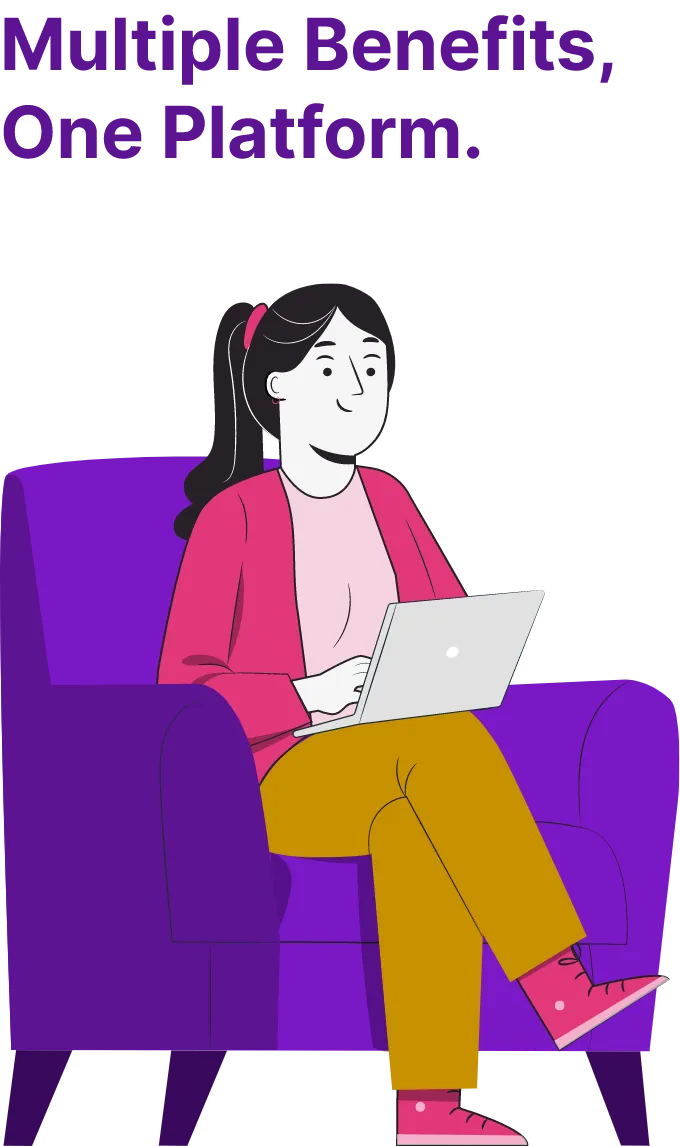How to do group health insurance onboarding of employees?
Onboarding employees into group health insurance is one of the most important responsibilities for any HR leader. Why? Because the very first experience employees have with their group health insurance policy sets the tone for how they perceive not just the coverage, but the entire benefits package you’ve worked hard to put together.
Think of it from an employee’s perspective, when a medical emergency strikes, they’re already juggling emotional stress, financial worries, and a flood of information. At that moment, insurance should not feel like another burden. Unfortunately, if the group health insurance plan is introduced with complex jargon or unclear processes, employees are left confused and anxious instead of reassured.
That’s why onboarding needs to go beyond handing out policy documents. Employees should know where to check for network hospitals, download their e-cards, understand coverage and claims, and get clarity on inclusions and exclusions in simple, everyday language. And when they need help, there should be a trusted SPOC or HR partner to guide them without delay.
Why preparation matters for HR
Preparation is everything when it comes to employee benefits. For employees, benefits like group health insurance are a reflection of how much the company truly values them. When HR teams are well-prepared, with accurate details and clear communication, employees see a smooth, organized process that builds trust and confidence in both the group health insurance policy and the company’s leadership.
A well-planned onboarding experience ensures employees know exactly how to access their group health insurance plan, what’s covered, and how to make claims without confusion. This not only makes the group health insurance benefits more accessible but also positions HR as proactive and reliable. On the other hand, poor preparation, missing details, unclear communication, or last-minute errors, can cause stress, frustration, and even reduce trust in management.
Steps HR should take before onboarding employees to group health insurance
1. Get employee data ready: Ensure all employee details, such as names, dates of birth, dependents, and ages, are accurate. Errors or last-minute corrections can delay policy activation. Compiling this data correctly (as per government ID) ensures smooth issuance of e-cards and seamless verification during hospitalization. Accuracy here means employees can use their group health insurance benefits without unnecessary roadblocks.
2. Understand the policy yourself: Before presenting it to employees, HR should go through the coverage, exclusions, and claim process. This acts as a first layer of quality control and equips HR to confidently answer basic queries. Employees also appreciate quick and informed responses, which builds their trust in both the policy and the HR team.
3. Set employee expectations: Communicate what the onboarding session will cover. Share a pre-read, such as a basic policy snapshot or FAQs, so employees come prepared. This helps improve participation during onboarding and reduces the need for repeated clarifications later. It also builds literacy around corporate benefits, making employees more confident about using their coverage.
4. Align with your customer success manager (CSM): Share likely employee questions and concerns with your CSM beforehand. This allows the onboarding session to be customized to your organization’s unique needs, ensuring the discussion is relevant and practical for your workforce.
During onboarding: CSM + HR session
Present the policy clearly: Start by summarizing coverage types, eligible dependents, major inclusions/exclusions, and claim options. Use simple, relatable language so employees can easily grasp the essentials of their group health insurance plan.
Highlight coverage & dependents: Clearly explain who is covered, employee, spouse, children, and any policy limits, waiting periods, or special conditions. This transparency helps employees feel secure and informed about their group health insurance benefits.
Walk through the claim process: Break down how to file claims, emphasizing cashless versus reimbursement procedures and emergency protocols. Explain what steps to follow, whom to contact, and the documents required, ensuring employees can act quickly and confidently during medical situations.
Support questions: HR handles internal queries related to eligibility, documentation, and organizational processes. The CSM addresses insurer-specific questions, such as claim settlement timelines and network hospital participation.
Use real-life examples: Share relatable scenarios, like using an e-card at a network hospital or filing a quick reimbursement, to demystify the policy and help employees connect procedures to real situations.
Empower employees: Guide them on checking coverage details, accessing e-cards, viewing claim status, and understanding exclusions. Making insurance accessible, clear, and trustworthy ensures employees see it as a safety net rather than a burden.
After onboarding: HR follow-up
Share key takeaways & contact points
- Provide a concise summary of the group health insurance policy, including coverage highlights, dependents, and claim options.
- Clearly communicate SPOCs (Single Points of Contact) for claims, queries, and emergencies, so employees know exactly whom to reach.
- Ensure every employee has access to digital or physical e-cards, a guide to network hospitals, and the claims portal.
Create a simple reference document
- Distribute an easy-to-understand FAQ or reference sheet summarizing coverage, exclusions, claim instructions, and support channels.
- Make these resources easily accessible via intranet, benefits portal, or email.
- Encourage employees to register on the insurer’s app or portal for real-time claim tracking and benefit updates.
Collect employee feedback to improve each cycle
- Use anonymous surveys or feedback forms after onboarding to understand how clearly employees received information and how easy enrollment or claims were.
- Review feedback to identify recurring issues, knowledge gaps, or confusion, and update materials for future onboarding cycles.
- Monitor claims or service issues proactively to strengthen literacy and smoothen the employee experience with group health insurance plans.
Best practices for HR teams
- Thorough Preparation: Collect and verify employee and dependent data accurately to avoid delays in policy activation.
- Policy Mastery: Understand the group health insurance plan, coverage, exclusions, and claim processes to answer employee queries confidently.
- Clear Communication: Use simple, jargon-free language, and provide policy snapshots, FAQ sheets, and real-life examples to make benefits relatable.
- Collaborate with CSM: Coordinate with the Customer Success Manager to address insurer-specific questions and tailor sessions for your workforce.
- Effective Follow-Up: Share summary documents post-onboarding and gather employee feedback to improve future onboarding and claims support.
How Pazcare helps
- Integrated Digital Platform: Access benefits, e-cards, and real-time claim tracking in one place.
- Automated Processes: Sync employee data via payroll systems for seamless enrollment and policy management.
- Comprehensive Support: 24/7 Care Crew and chatbot assist employees with claims and benefit queries efficiently.
- Customized Solutions: Tailor group health insurance benefits to suit your company’s needs.
- Analytics & Insights: Detailed reports allow HR to monitor usage, optimize benefits strategy, and drive engagement.
Conclusion
With proper preparation and a trusted partner like Pazcare, HR teams can deliver smooth group health insurance onboarding. Clear, well-structured CSM sessions help employees understand and access their group health insurance policy, ensuring peace of mind during health events. Thoughtful onboarding and continuous support create a workforce that feels valued, cared for, and confident in using their benefits.





.svg)
.svg)
